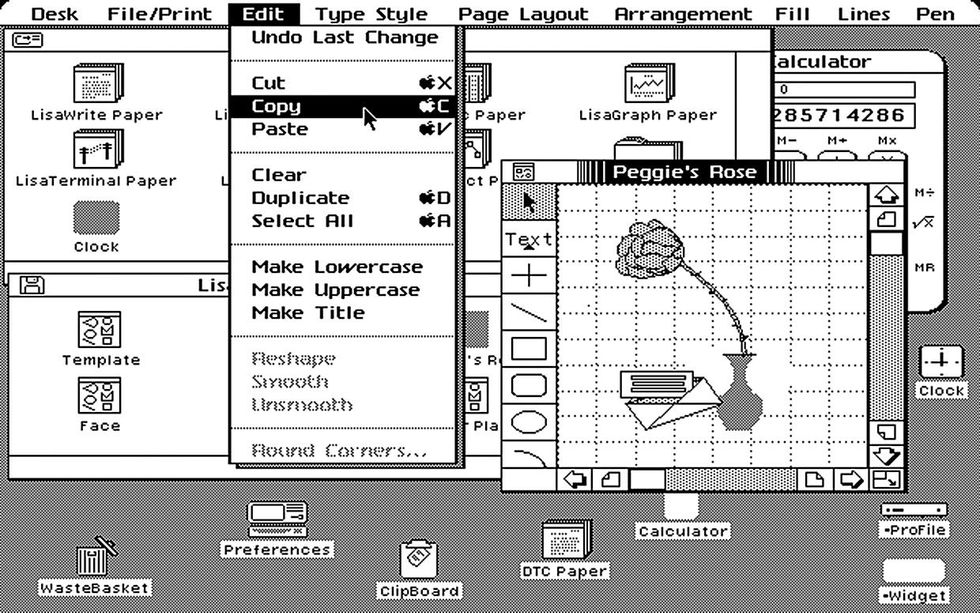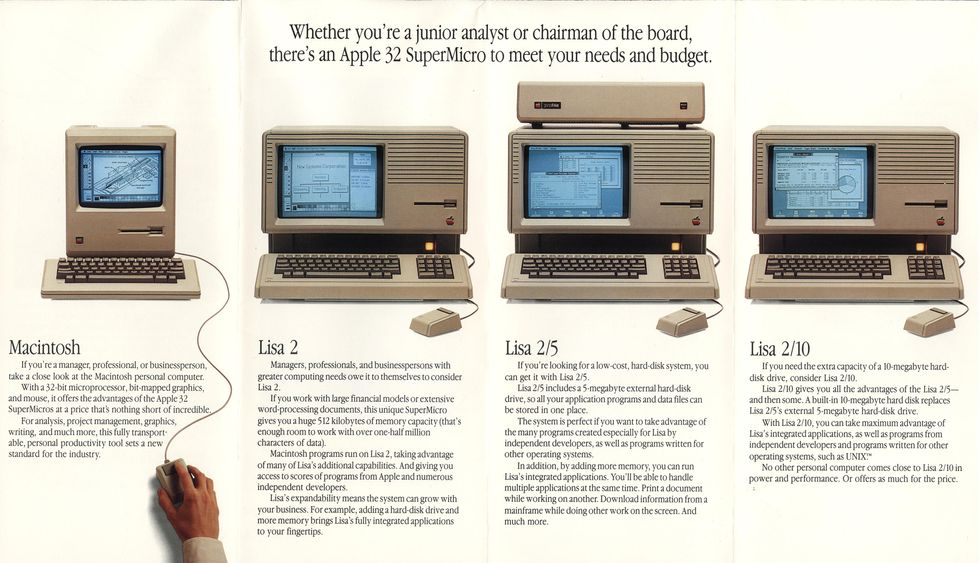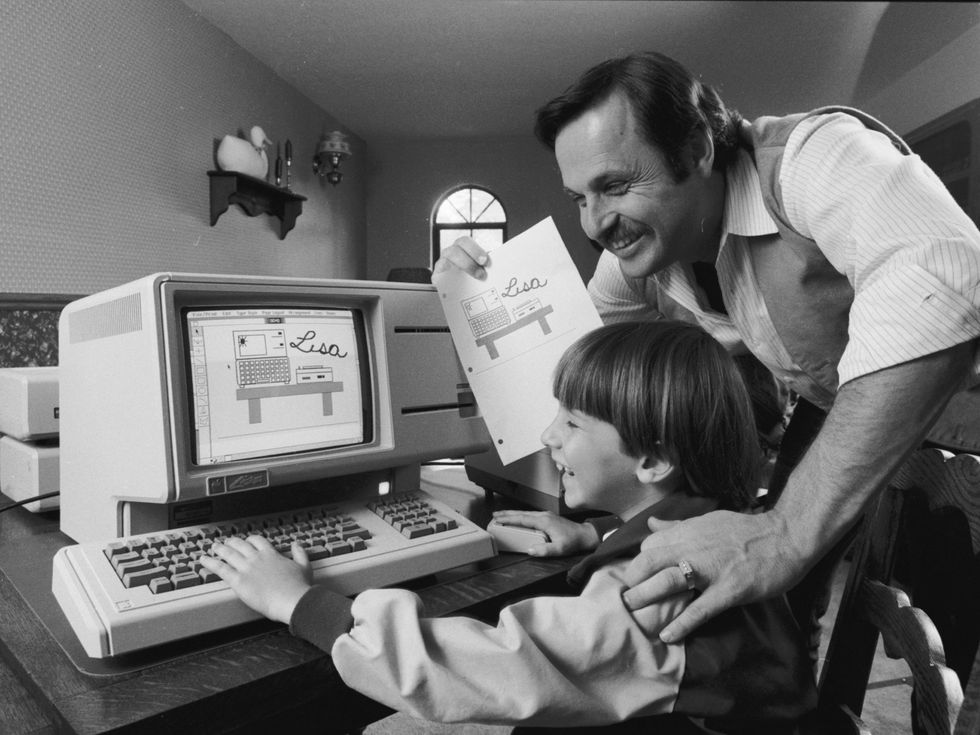The Lisa Was Apple’s Best Failure

Happy 40th Birthday to Lisa! The Apple Lisa computer, that is. In celebration of this milestone, the Computer History Museum has received permission from Apple to release the source code to the Lisa, including its system and applications software.
You can access the Lisa source code here.
What is the Apple Lisa computer, and why was its release on 19 January 1983 an important date in computer history? Apple's Macintosh line of computers, known for bringing mouse-driven graphical user interfaces (GUIs) to the masses and transforming the way we use computers, owes its existence to its immediate predecessor, the Lisa. Without the Lisa, there would have been no Macintosh-at least in the form we have it today-and perhaps there would have been no Microsoft Windows either.
From DOS to the Graphical User InterfaceThere was a time when a majority of personal computer users interacted with their machines via command-line interfaces-that is, through text-based operating systems such as CP/M and MS/DOS, in which users had to type arcane commands to control their computers. The invention of the graphical user interface, or GUI, especially in the form of windows, icons, menus, and pointers (collectively known as WIMP), controlled by a mouse, occurred at Xerox PARC in the 1970s. Xerox's Alto was a prototype computer with a bitmapped graphics display designed to be used by just one person-a personal computer." Key elements of the WIMP GUI paradigm, such as overlapping windows and popup menus, were invented by Alan Kay's Learning Research Group for the children's software development environment, Smalltalk.
In 1979, a delegation from Apple Computer, led by Steve Jobs, visited PARC and received a demonstration of Smalltalk on the Alto. Upon seeing the GUI, Jobs immediately grasped the potential of this new way of interacting with a computer and didn't understand why Xerox wasn't marketing the technology to the public. Jobs could see that all computers should work this way, and he wanted Apple to bring this technology out from the research lab to the masses.
From the Apple II to the LisaIn its own R&D labs, Apple was already working on a successor to its best-selling, but command-line-based, Apple II personal computer. The machine was code-named Lisa," after Steve Jobs' child with a former girlfriend. The code-name stuck, and a backronym, Local Integrated Systems Architecture, was invented to conceal the connection to Jobs' daughter. Unlike the Apple II, which was aimed at the home computer market, the Lisa would be targeted at the business market, use the powerful Motorola 68000 microprocessor, and be paired with a hard drive.After the PARC visit, Jobs and many of Lisa's engineers, including Bill Atkinson, worked to incorporate a GUI into the Lisa. Atkinson developed the QuickDraw graphics library for the Lisa, and he collaborated with Larry Tesler, who left PARC to join Apple, on developing the Lisa's user interface. Tesler created an object-oriented variant of Pascal, called Clascal, for the Lisa Toolkit application programming interfaces. Later, with the guidance of Pascal creator Niklaus Wirth, Clascal would evolve into the official Object Pascal.
 A screenshot from the Apple Lisa 2 shows icons on the desktop and the menu bar with pulldown menus at the top of the screen. This interface is very similar to that of the original Macintosh.David T. Craig
A screenshot from the Apple Lisa 2 shows icons on the desktop and the menu bar with pulldown menus at the top of the screen. This interface is very similar to that of the original Macintosh.David T. Craig
A reorganization of the company in 1982, however, removed Jobs from having any direct influence on the Lisa project, which was subsequently managed by John Couch. Jobs then discovered the Macintosh project started by Jef Raskin. Jobs took over that project and moved it away from Raskin's original appliance-like vision to one more like the Lisa-a mouse-driven, GUI-based computer but more affordable than the Lisa.
For a few years, the Lisa and Macintosh teams competed internally, although there was collaboration as well. Atkinson's QuickDraw became part of the Macintosh, and Atkinson thus contributed to both projects. Lisa software manager Bruce Daniels worked on the Macintosh for a time, greatly influencing the direction of the Mac toward the Lisa's GUI. Tesler's work on the object-oriented Lisa Toolkit would later evolve into the MacApp frameworks, which used Object Pascal. Owen Densmore, who had been at Xerox, worked on printing for both the Lisa and the Macintosh.
The Lisa's user interface underwent many versions before finally arriving at the icon-based desktop familiar to us from the Macintosh. The final Lisa Desktop Manager still had a few key differences from the Mac. The Lisa had a document-centric rather than application-centric model, for example. Each program on the Lisa featured a stationary pad" that resided on the desktop, separate from the application icon. Users tore off a sheet from the pad to create a new document. Users rarely interacted with the application's icon itself. The idea of centering the user's world around documents rather than applications would reemerge in the 1990s, with technologies such as Apple's OpenDoc and Microsoft's OLE.
The Lisa was released to the public on 19 January 1983, at a price of US $9,995 (about $30,000 today). This was two years after Xerox had introduced its own GUI-based workstation, the Star, for $16,595, which was similarly targeted at office workers. The high price of both machines compared to the IBM PC, a command-line-based personal computer that retailed for $1,565, was enough to doom them both to failure.
But price wasn't the Lisa's only problem. Its sophisticated operating system, which allowed multiple programs to run at the same time, was too powerful even for its 68000 processor, and the machine thus ran sluggishly. Additionally, the Lisa shipped with a suite of applications, including word processing and charts, which discouraged third-party developers from writing software for it. The original Lisa included dual floppy drives, called Twiggy, that had been designed in-house and proved unreliable.
From the Lisa to the MacintoshMeanwhile, the Macintosh project competed with Lisa internally for resources and had Jobs' full attention. Announced in the famous Superbowl ad, the Macintosh began shipping in January 1984 for $2,495. Unlike the Lisa, it had no hard drive, had greatly reduced memory, didn't multitask, and lacked some other advanced features, and thus was much more affordable. An innovative marketing program created by Dan'l Lewin (now CHM's CEO) sold Macintoshes at a discount to college students, contributing significantly to the Mac's installed base.
The advent of Postscript laser printers like the Apple LaserWriter in 1985, combined with the page layout application PageMaker from Aldus, created a killer application for the Macintosh: desktop publishing. This new market would grow to a billion dollars by 1988. The Macintosh would become the first commercially successful computer with a graphical user interface, and its product line continues to this day.
 The Lisa 2 series was announced in January 1984 alongside the Macintosh.Computer History Museum
The Lisa 2 series was announced in January 1984 alongside the Macintosh.Computer History Museum
The Lisa 2, whose two models were priced at $3,495 and $5,495, respectively, was announced alongside the Macintosh in January 1984. The original Lisa's problematic Twiggy floppy drives were replaced with a single Sony 3.5-inch floppy drive, the same as that used on the Mac. A year later, the Lisa 2/10 was rebranded as the Macintosh XL with MacWorks, an emulator that allowed it to run Macintosh software. But despite improved sales, the product was killed off in April 1985 so that Apple could focus on the Mac, according to Owen Linzmayer's 2004 book Apple Confidential 2.0.
The release of the GUI-based Lisa and the Macintosh inspired several software companies to create software shells" that would install GUI environments on top of MS-DOS command-line-based IBM PCs. The first of these was VisiOn, released in late 1983 by VisiCorp, publisher of the first spreadsheet program VisiCalc. This was followed in 1985 by GEM from Digital Research, the company behind the command-line-based CP/M operating system. Microsoft came out with Windows later the same year, although Windows wouldn't see wide use until the 1990s, when Windows 3.0 came out. Both GEM and Windows were influenced by the Mac's user interface. And between Windows and the Macintosh, GUIs have become the user interface paradigm for personal computers.
 Apple's John Couch and his son demonstrate the what you see if what you get" concept on a Lisa computer.Roger Ressmeyer/Corbis/Getty Images
Apple's John Couch and his son demonstrate the what you see if what you get" concept on a Lisa computer.Roger Ressmeyer/Corbis/Getty Images
Despite the Lisa's failure in the marketplace, it holds a place in the history of computing as the first GUI-based computer to be released by a personal computer company. Though the Xerox Star 8010 beat the Lisa to market, the Star was competing with other workstations from Apollo and Sun. Perhaps more importantly, without the Lisa and its incorporation of the PARC-inspired GUI, the Macintosh itself would not have been based on the GUI. Both computers shared key technologies, such as the mouse and the QuickDraw graphics library. The Lisa was a key steppingstone to the Macintosh, and an important milestone in the history of graphical user interfaces and personal computers more generally.
Learn more about the Art of Code at CHM or sign up for regular emails about upcoming source code releases and related events.
Editor's note: This post originally appeared on the blog of the Computer History Museum.